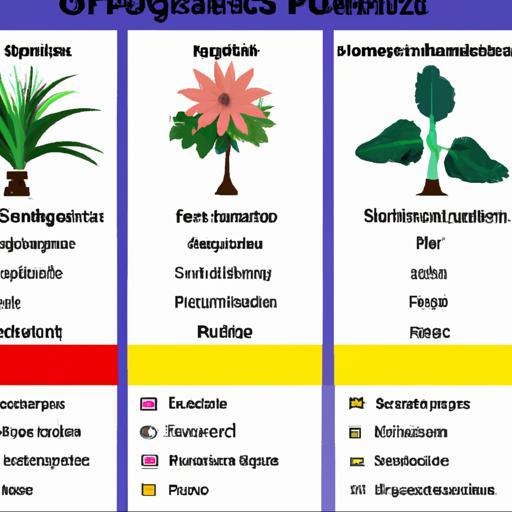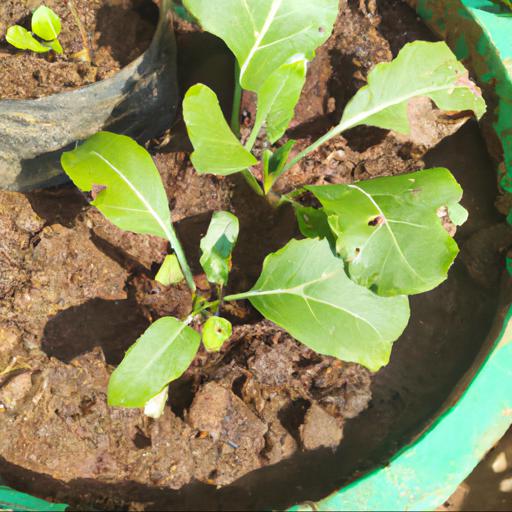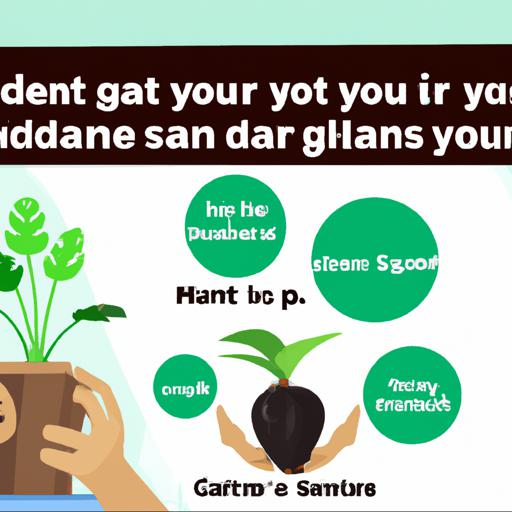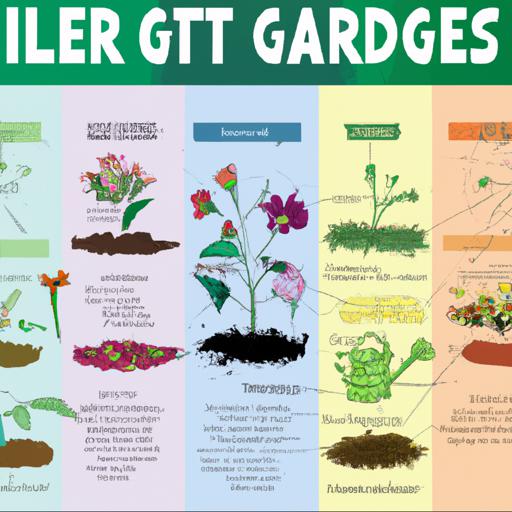Are you a beginner in gardening and feeling overwhelmed by the range of plants available? Don’t worry! In this blog, we will explain the different types of plants and their characteristics to help you get started on your gardening journey.
We will cover the basics, such as annuals, perennials, and evergreens, and delve into more specialized plant types like succulents, cacti, and houseplants. So, if you’re ready to start your gardening journey, read on to learn more about the different types of plants and their characteristics.
Different types of plants explained

Gardening for beginners can be an intimidating yet rewarding hobby. Knowing the different types of plants and how to care for them is the first step towards achieving the perfect outdoor space.
From annuals to perennials and hardy shrubs to delicate flowers, understanding the basics of what each type of plant has to offer can help ensure your garden’s success. Annuals are plants that complete their life cycle in one growing season, dying off as soon as temperatures drop in autumn. Examples of annual plants would be sunflowers, zinnias, and petunias.
Given the right conditions, such as full sun and the proper soil and water requirements, they reward you with a beautiful display of colourful flowers throughout the summer. Perennials, on the other hand, bloom and produce foliage over multiple growing seasons, often expanding and growing over time. Examples of perennials are daylilies, foxgloves, and daisies.
As they require less maintenance over the years, they can be a great choice for creating a low-maintenance garden. It is important to remember to give them the right amount of light and water as they can also be temperamental.
Finally, there are hardy shrubs and trees, which sometimes require little to no maintenance. These plants, like forsythia, rhododendron, and holly, are designed to tolerate colder weather and grow to larger sizes than the other types of plants. Understanding the attributes of each type of plant will help you make the best choices for designing your garden.
With the right mix of knowledge and care, you can create a flourishing garden that will be the pride of your neighbourhood.
Benefits of gardening for beginners

Gardening is a fun and rewarding hobby, especially for those new to the practice or who are just starting out. With a little bit of knowledge, beginners can learn the basics to get started and benefit from the advantages of gardening. From growing plants to harvesting a variety of fruits and vegetables, as well as contributing to a healthier environment, there are many advantages to gardening.
The first benefit of gardening for beginners is being able to pick out which type of plants they want to cultivate. Everything from flowers and herbs to vegetables and healthy fruits can be grown when planting with the right amount of care and attention.
It is important to take the time to research what type of plants will help maintain the environment and suit the beginner’s needs. When it comes to flowers, days lilies and snapdragons both thrive in the summertime, providing a bright burst of color that calms and relaxes.
Herbs such as sage, rosemary, and oregano thrive well in a small pot on the kitchen window, providing a variety of seasonings for dishes. Fruit and vegetables such as tomatoes, squash, and apples can be planted with a little extra time, knowledge, and attention. All of these plants can be either purchased or grown from seeds, depending on what the beginner prefers.
Finally, gardening provides a wonderful sense of connection. Not only do gardeners become close to the plants they are growing, but they also contribute to a healthier environment. This connection helps to create a more sustainable environment and lifestyle, and the more people that learn the basics of gardening, the better for everyone.
Gardening for beginners allows those starting out to learn the basics with ease and benefit from the advantages. With a little research, beginners can pick out which plants they want to cultivate and get to know them better while contributing to a healthier environment.
From flowers and herbs to vegetables and fruits, there’s something for everyone when it comes to gardening.
Tips for planting and caring for plants

As gardening for beginners, understanding the basics of different plants types is the key to success. When planting and caring for plants, it’s important to have a good understanding of what each type of plant requires for optimal growing conditions.
This can mean everything from perfect soil pH levels to specific watering and pruning needs. In this blog, we will provide an overview of some of the most common plant types and explain some tips for planting and caring for them. Flowering plants are one of the most popular types of plants due to their vibrant colors and attractive blooms.
There are many different varieties of flowering plants, such as roses, tulips, and lilies, and they all come with their own unique set of growing requirements. When starting out, it’s best to go with a hardy flowering variety such as a pansy or petunia, as they are less susceptible to disease and are typically very tolerant of various growing conditions. When caring for flowering plants, it’s important to make sure they get plenty of sunlight and are watered regularly.
It’s also important to fertilize your plant every few weeks with a balanced fertilizer that provides the necessary nutrients for optimal flower growth. Fruit and vegetable plants are another great option for beginner gardeners.
There is a wide variety of plants and fruits available to grow in your garden, from apples and pears to tomatoes and peppers. For the best results, it is important to perform soil tests to make sure your soil is balanced for optimal nutrient absorption. Fruit and vegetable plants require regular watering, as well as pruning and fertilizing every few weeks.
Depending on the type of plant, mulch may also help to retain moisture and keep weeds at bay. Herbs are another popular type of plant suitable for beginner gardeners.
They are relatively easy to care for and they can provide fresh herbs all year round. When planting herbs, it’s important to make sure you’re planting the right type of herb for your particular region. Herbs require regular watering and full sun, so make sure to keep an eye on how much water they are receiving and where they are placed in the garden. When harvesting herbs it’s important to clip from the tips and not from the base of the plant in order to promote growth. By understanding the basics of planting and caring for different types of plants, gardening for beginners can be a very rewarding experience. Whether you are growing flowers, fruits, vegetables, or herbs, having the right soil, fertilizer, and a good understanding of their specific needs is the key to success. Knowing which varieties to choose for your region and what type of environment is needed for optimal plant growth can help make the process of gardening for beginners more enjoyable and less overwhelming.
Our video recommendation
Bottom Line
This article is a great guide for gardening beginners. It explains the different types of plants, such as annuals, perennials, bulbs, and shrubs, and provides tips on how to choose the right plants for your garden.
It also covers the basics of soil, watering, and fertilizing, and offers advice on how to create a beautiful garden that will thrive. With this helpful guide, you can start your gardening journey with confidence.
FAQ
What are the most common types of plants for gardening beginners?
The most common types of plants for gardening beginners are annuals, perennials, vegetables, herbs, and shrubs.
What are the benefits of gardening for beginners?
The benefits of gardening for beginners include the opportunity to learn about plants, the satisfaction of growing something from seed to harvest, the potential to save money on produce, the ability to connect with nature, and the potential to reduce stress and improve mental health.
What are the best tips for gardening beginners?
1. Start small and choose a manageable plot of land. 2. Research the type of plants you want to grow and the climate they need. 3. Prepare the soil properly and use quality compost and fertilizers. 4. Water regularly and use mulch to retain moisture. 5. Choose disease-resistant plants and inspect them regularly for pests. 6. Prune and trim plants regularly to promote healthy growth. 7. Weed regularly to prevent competition for nutrients. 8. Use natural pest control methods whenever possible. 9. Harvest regularly to encourage new growth. 10. Have patience and enjoy the process.
What are the most important things to consider when choosing plants for a beginner garden?
The most important things to consider when choosing plants for a beginner garden are the climate, soil type, sunlight, water requirements, and the size of the garden.
What are the best tools for gardening beginners?
The best tools for gardening beginners are a spade, a trowel, a rake, a hoe, and a pair of garden shears.
What are the most common mistakes made by gardening beginners?
The most common mistakes made by gardening beginners are over-watering, not providing enough sunlight, planting in the wrong season, not providing enough nutrients, and not using proper pest control.

